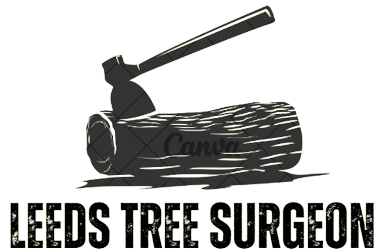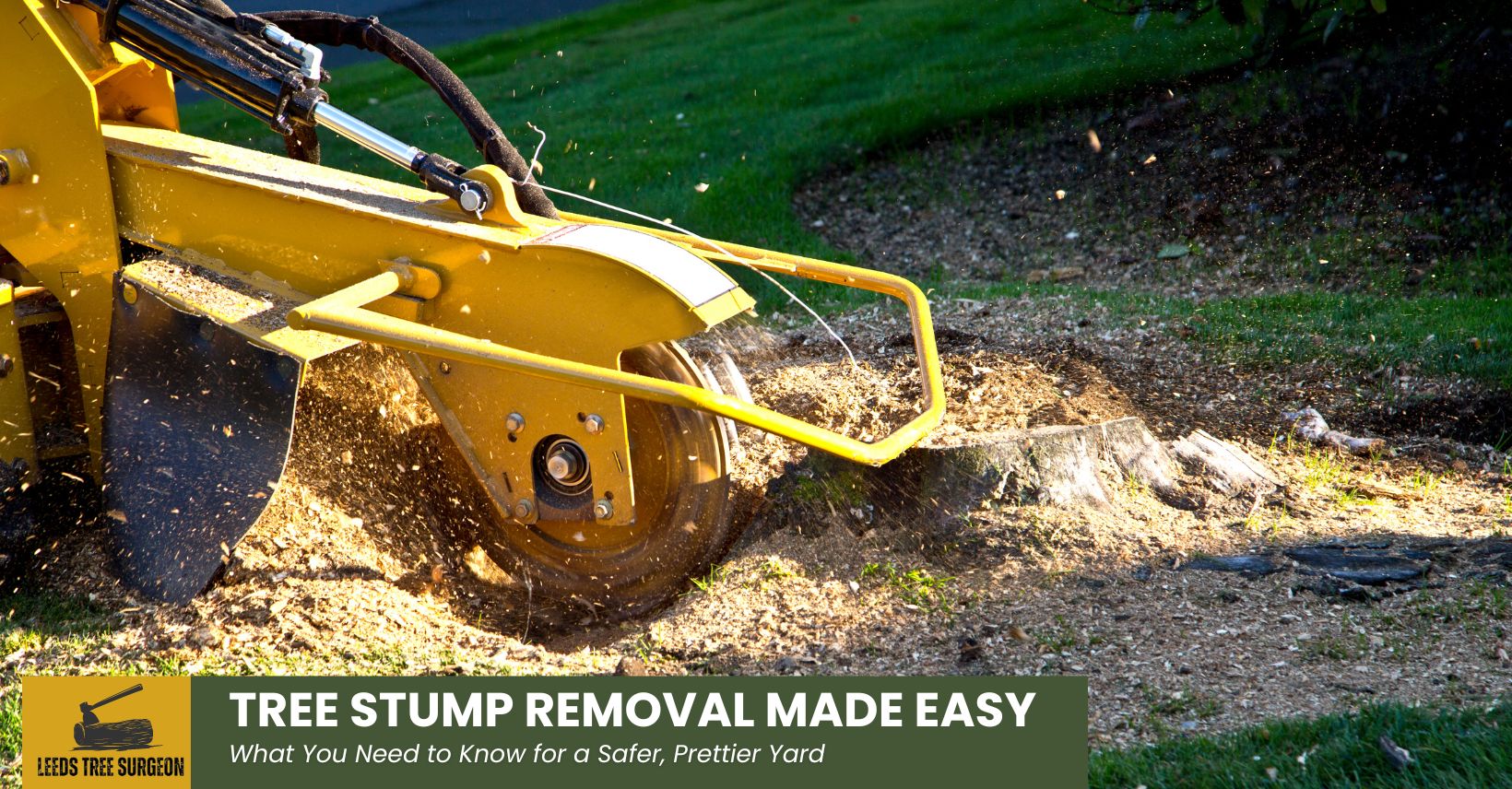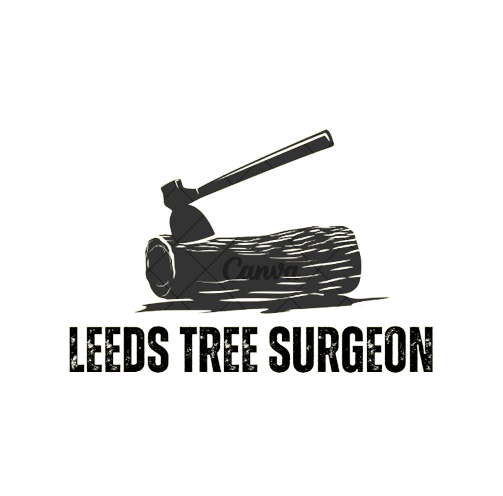Are you tired of looking at that unsightly tree stump in your yard?
Tree stump removal may seem daunting, but with the right tools and techniques, it can be easier than you think.
This article will discuss the importance of removing tree stumps for aesthetic and safety reasons.
We will also explore the different tree stump removal methods, from manual techniques to chemical solutions.
So grab your shovel, axe, or stump grinder, and get ready to achieve a clear and safe landscape in your yard.
What Is Tree Stump Removal?
Tree stump removal involves removing the remaining part of a tree after it has been felled, typically using grinding equipment or other removal methods.
Stump grinding, a prevalent stump removal method, employs grinders with rotating discs to chip the wood into mulch and small chips. This method, utilising portable and industrial equipment, is favoured for its speed and effectiveness in reducing stumps to manageable debris. The transformation of cumbersome tree stumps into useful mulch underscores the necessity of stump removal, leading seamlessly into the reasons for eliminating these potential hazards from your landscape.
Why Should You Remove Tree Stumps?
Removing tree stumps is important for several reasons, including:
- Improving the aesthetics of your garden
- Enhancing safety
- Preventing the spread of pests and diseases that often thrive in decaying wood
Aesthetics
Tree stumps can significantly detract from the aesthetics of your garden, making the landscape look unfinished and untidy, especially in places like Hollywood, where curb appeal is highly valued.
By removing tree stumps from your garden, you not only eliminate eyesores but also create a smoother, more polished look for your outdoor space. This process opens up opportunities to enhance the overall design by adding new plants or features in the cleared areas.
Without these stumps, your landscaping design can flow more seamlessly, allowing for better continuity and functionality. This improvement can also help prevent tripping hazards, creating a safer environment for your family and guests.
Safety
Tree stumps pose substantial safety hazards, especially for children and animals who may trip over them and for wildlife that might make homes in the decaying wood.
These remnants of cut or fallen trees can harbour sharp edges and protruding roots, inviting accidents and injuries in your outdoor spaces. From twisted ankles to more severe falls, the risks associated with tree stumps are varied and real. Decaying stumps can attract pests like termites, compromising your garden’s safety and structural integrity. By opting for tree stump removal, you can mitigate these dangers and create a safer environment for your family, pets, and local wildlife.
Prevents Pests and Diseases
Decaying tree stumps are breeding grounds for pests and diseases, including fungi that can spread to healthy trees and plants through the roots.
These decaying stumps attract insects, such as beetles and termites, which can then infest nearby vegetation, posing a threat to the entire ecosystem.
Certain tree diseases, like oak wilt or root rots, can survive and thrive in the decaying wood of tree stumps, ready to infect other plants in the vicinity.
Removing tree stumps reduces safety hazards, improves landscape aesthetics, and fosters new growth by lessening resource competition. This landscape cleanup sets the stage for exploring the various techniques available for stump elimination, leading directly into the discussion on the different tree stump removal methods.
What Are the Different Methods of Tree Stump Removal?
Several methods for tree stump removal exist, each with its own set of tools and techniques. These include manual removal, chemical removal, and stump grinding.
Manual Removal
Manual removal of tree stumps involves digging around and cutting through the roots with tools like a spade and a hatchet. This process can be labour-intensive but effective for smaller stumps.
Another handy tool for manual stump removal is an axe, which combines the features of a hatchet and an adze for better cutting and digging capabilities. The process usually starts by digging a trench around the stump to expose its roots. The spade carefully severs the roots from the stump, ensuring the main root system is disrupted. Patience is key during this process as it requires physical effort and time.
Chemical Removal
Chemical removal involves applying specialised chemicals or stump killers to accelerate the decomposition of the wood, making it easier to remove the tree stump over time.
These chemicals break down the wood’s cellular structure, weaken its integrity, and promote natural decay. Common chemicals used in this method include potassium nitrate, a popular stump remover, and triclopyr, a powerful herbicide.
Applying these chemicals typically involves drilling holes into the stump, filling them with the chemical solution, and allowing it to penetrate the wood. One of the key benefits of chemical removal is that it is a relatively low-effort and cost-effective method compared to physically removing a stump. This method requires patience as it can take several weeks or even months for the stump to decompose fully, and there is a risk of harming surrounding vegetation if the chemicals are not used carefully.
Stump Grinding
Stump grinding is a popular tree stump removal method involving using a stump grinder to shred the stump into small wood chips, making it an efficient and effective solution.
During stump grinding, the powerful stump grinder uses a rotating cutting disc with sharp teeth to grind the stump to ground level, eliminating it a visual obstacle. This method, preferred for its speed and environmental benefits, prepares the site for immediate replanting or other landscaping activities without further digging. Transitioning smoothly from the process to preparation, let’s explore the essential tools required for effective stump removal, which we will detail in the upcoming section.
What Tools Do You Need for Tree Stump Removal?
Effective tree stump removal requires various tools, including basic equipment like spades and axes and specialised tools like chainsaws, chemical stump removers, and stump grinders.
Shovel
A sturdy spade is essential for digging around the tree stump and exposing the roots, which is a critical first step in removal.
Using the right spade can significantly improve the efficiency of the stump removal operation. The sharp edge of the spade allows you to easily cut through the soil, allowing for a smooth and precise excavation process. By leveraging the leverage provided by the spade handle, you can apply force strategically to loosen the soil around the stump. This systematic approach prevents unnecessary damage to nearby vegetation and underground utilities, ensuring a clean and effective removal process.
Axe or Chainsaw
An axe or chainsaw is used to cut through the main roots and the stump, making it easier to break down and remove the tree stump.
When using an axe for stump removal, start by chopping away any excess branches and debris surrounding the stump. Aim to cut diagonally across the stump to weaken it. Take breaks regularly to avoid fatigue and ensure precision in your chopping.
On the other hand, a chainsaw provides a quicker but more technical approach. Wear appropriate safety gear such as gloves, goggles, and ear protection. Make sure the chainsaw chain is sharp for efficient cutting. Work in sections to avoid kickback and maintain control.
Chemical Stump Remover
Chemical stump removers are applied to the tree stump to accelerate its decomposition, making removing the remaining wood and roots easier.
These stump removers usually come in powder form and are mixed with water to create a solution. The chemical components typically include high concentrations of potassium nitrate, the main ingredient in breaking down the stump. When applied correctly, the chemical solution penetrates the stump, speeding up the rotting process. This process can take several weeks to several months, depending on the size and type of the stump.
Stump Grinder
A stump grinder is a powerful piece of grinding equipment that shreds the tree stump into small wood chips, allowing for efficient removal and disposal.
The operation of a stump grinder involves positioning the machine over the stump and lowering the cutting wheel onto the wood. Safety precautions must be observed, such as wearing protective gear like goggles and ear protection and ensuring no bystanders are nearby. The grinder is then manoeuvred to gradually grind away the stump, avoiding rocks and debris that could damage the equipment.
Using a stump grinder effectively removes unsightly stumps, enhancing landscape aesthetics, eliminating tripping hazards, and preventing stump regrowth. This method ensures a safer, neater environment, readying the area for further landscaping or replanting. Following this, we’ll explore the detailed steps for removing a tree stump to facilitate an efficient and successful stump-removal process.
What Are the Steps for Removing a Tree Stump?
Removing a tree stump involves several key steps, including:
- Clearing the area
- Cutting the stump as close to the ground as possible
- Drilling holes
- Applying chemical removers
- Using a stump grinder
- Filling in the hole
Clear the Area
The first step in tree stump removal is to clear the area around the stump, removing any debris, rocks, or obstacles that could interfere with the process.
- A clear workspace ensures safety during removal and allows for better visibility and manoeuvrability.
- Wearing appropriate protective equipment such as gloves, goggles, and sturdy footwear is important to maintain safety.
- Before starting the removal, it is advisable to check for underground services to avoid accidental damage.
- Correct tools, such as a stump grinder or mattock, can make the job more efficient and effective.
Cut the Stump as Close to the Ground as Possible
Use a chainsaw to cut the tree stump as close to the ground as possible, making the subsequent removal steps easier and more efficient.
- When cutting the stump close to the ground, it is important to ensure proper safety measures are in place to prevent accidents. Wear appropriate safety gear, including gloves, goggles, and ear protection.
- Before starting the chainsaw, check the blade is sharp and in good condition to ensure a clean and effective cut. Position yourself securely and maintain a stable stance while operating the chainsaw for better control.
- Cutting the stump near the ground facilitates easier digging or grinding during the final removal process. Reducing the stump to ground level enhances the aesthetics of your outdoor space and eliminates tripping hazards.
Drill Holes in the Stump
Drill several holes into the top and sides of the stump to facilitate the application of chemical stump removers and accelerate decomposition.
Creating these holes allows the chemical stump remover to penetrate deeply into the root system, effectively breaking it down from within. This process not only speeds up decomposition but also weakens the structure of the stump, making it easier to remove. Tools such as a power drill with a large bit are typically used to ensure the holes are wide enough to allow the solution to seep in thoroughly. These drilled holes act as pathways for the chemicals to target the stump’s core, ensuring a more efficient removal process.
Apply Chemical Stump Remover (If Using)
If you choose to use chemicals, apply the chemical stump remover into the holes drilled earlier, following the manufacturer’s instructions for the best results.
Before starting the application process, it is vital to prioritise safety measures. Always wear protective gear such as gloves, goggles, and long sleeves to shield yourself from potential chemical splashes. Make sure to work in a well-ventilated area to avoid inhaling harmful fumes. Take time to thoroughly read and understand the instructions provided by the manufacturer to ensure safe and effective usage.
When applying the stump remover, remember that patience is key. The chemical will gradually break down the stump over several weeks. Keep the area moist by watering it regularly to aid in the decomposition process. Avoid disturbing the treated area to allow the chemicals to work undisturbed for optimal results.
Use a Stump Grinder (If Using)
If using a stump grinder, operate the grinding equipment to shred the stump into small wood chips, following all safety guidelines to ensure a smooth and efficient process.
When operating a stump grinder, it is important to wear appropriate safety gear, such as goggles, gloves, and ear protection. Before starting the machine, inspect the area around the stump for any obstacles or debris that could interfere with the grinding process. Position the grinder properly, ensuring stability and control during operation. Be mindful of the grinder’s cutting depth, adjusting it as needed to achieve the desired level of stump removal. Remember to move the grinder slowly and methodically to obtain consistent results.
Fill in the Hole
After removing the stump, fill the hole with soil or other suitable material to restore the landscape to its original state.
Filling in the hole left after stump removal is an important step in the restoration process. Proper soil compaction is essential to prevent potential issues such as sinking or uneven settling. To ensure effective compaction, you can use techniques like tamping the soil in layers or using specialised compaction equipment.
After compacting the filled hole, add topsoil to foster robust plant growth. Effective landscaping after stump removal necessitates strategic planning for placing new plants and design elements to boost the area’s visual appeal. This thoughtful landscape enhancement sets the stage for our final considerations on maintaining a clean and safe environment.
Final Thoughts: Achieving a Clear and Safe Landscape
Effective tree stump removal can achieve a clear and safe landscape, enhance the beauty of your garden, and ensure the safety and health of your outdoor space, making it a worthwhile investment.
Removing tree stumps offers multiple benefits, including preventing accidents caused by tripping hazards and reducing the risk of pests and diseases that can affect nearby plants.
Professional assistance is important as it guarantees thorough removal, prevents regrowth, and avoids damage to underground utilities. Hiring experts ensures efficient cleanup, saving you time and effort. By opting for professional tree stump removal services, you create a cleaner, more aesthetically pleasing environment, enhancing your property’s overall appeal and value. Check it out for more information.





